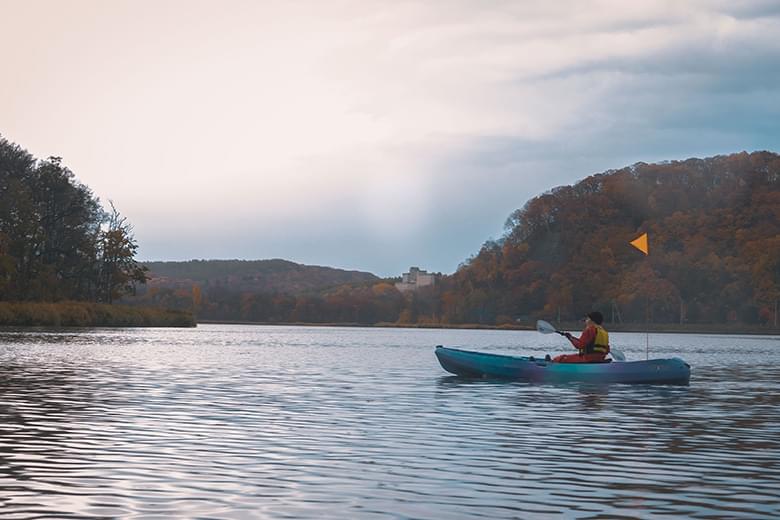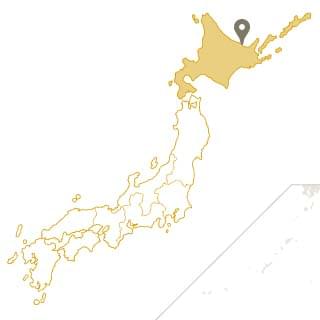Abashiri is located on the northeastern coast of Hokkaido, which is the northernmost island of Japan. Abashiri is thought of as an extremely cold place—even by Hokkaido standards—with its main attractions being the drift ice in the Sea of Okhotsk, the Abashiri Prison with its historically harsh conditions, and the Hokkaido Museum of Northern Peoples, which is devoted not only to the Indigenous Okhotsk and Ainu people of Hokkaido but also to various northern tribes around the world.
Abashiri, however, is also noted for its fascinating culture, abundant produce, and gorgeous scenery all through the year. The local seafood and vegetables are undeniably fresh and delicious, and Abashiri is the largest producer of barley for Japanese beer manufacturers. In autumn, you can drive through hills displaying brilliant foliage or even kayak on Lake Abashiri.
Nature tour by kayak on Lake Abashiri

One of the best ways to appreciate the autumn scenery here is to kayak on Lake Abashiri. A friendly nature guide will accompany you across the water and through many local spots of interest. Along the way, your guide will share local knowledge and point out rare flora and fauna, including wildlife like the white-tailed eagle. Kayaking allows you to take in the beauty of nature and breathe in the fresh air while skimming effortlessly over the calm water.

Venturing out with a local English-speaking guide gives you the opportunity to learn about the region in depth. There are a few kayaking routes to choose from depending on time and interest. One goes five kilometers downstream all the way to the Abashiri Prison!
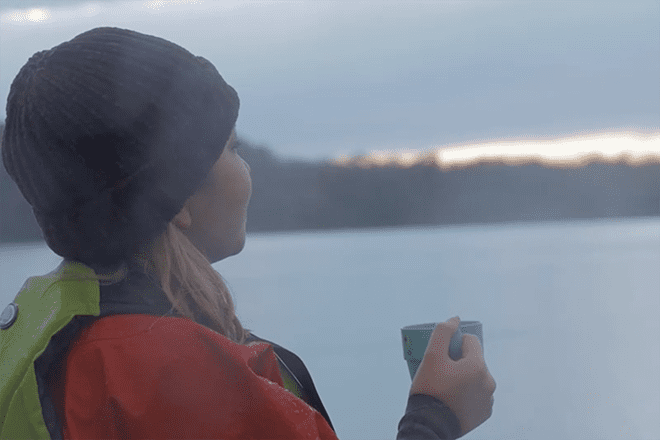
On this particular tour, the guide took us to a cove, where we drank tea and watched the determined salmon swim upstream against the current.
- Name:
- Connectrip
- Address:
- 812-2 Yobito, Abashiri, Hokkaido
- Availability:
- Outdoor activities, such as kayaking, snowmobiling, and ice fishing, are available in season by appointment.
Unwind with homemade wood-fired pizza

Work up an appetite by kayaking, then tuck into some homemade pizza! All the ingredients are locally sourced: the wheat for the dough and the produce and seafood for the toppings, including onions, peppers, salmon, scallops, and other seasonal items. Try your hand at making your own pizza from scratch, and pile it high with all the toppings you desire. There will never again be one like it!
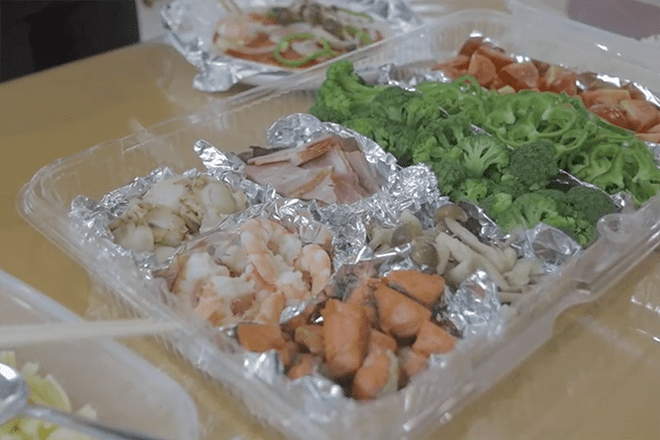
After dressing the pizza, you will put it into the wood-fired oven, where you’ll occasionally turn it as it bakes. Within a few short minutes, a delicious thick pizza is ready to eat. Relish your creation along with a complimentary drink while gazing at the beautiful lake.
- Name:
- Connectrip
- Address:
- 812-2 Yobito, Abashiri, Hokkaido
- Availability:
- Pizza making and other food-preparation experiences are available year-round.
Relax at Lake Abashiri Tsuruga Resort
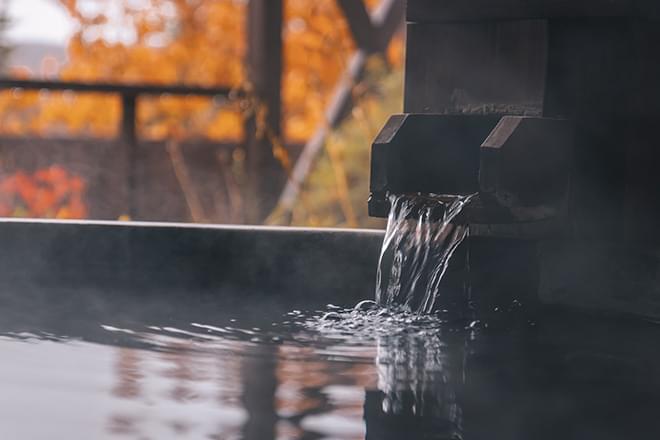
Spend a night at the Lake Abashiri Tsuruga Resort to discover a bit of the region’s rich history and to honor the Indigenous Okhotsk culture and Moyoro people. The hotel’s design, from its interior decor and art to its staff uniforms, pays homage to the people who once resided on Abashiri land. The onsen on the first floor includes indoor and outdoor space, as well as a relaxing lounge with massage chairs. Guests can stroll leisurely through the hotel in their yukata, which also feature Okhotsk designs.
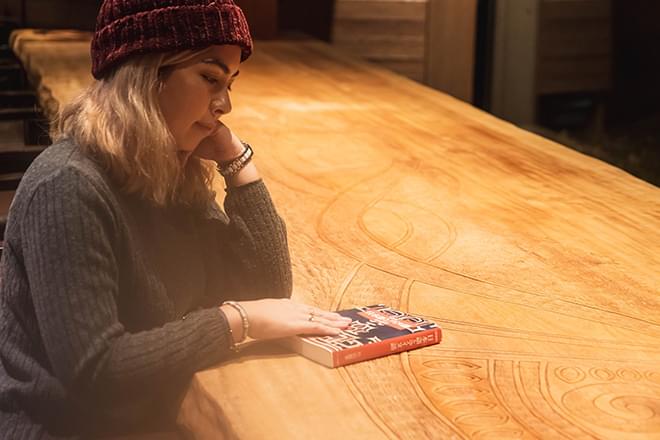
Little is known about the Okhotsk culture and the Moyoro people, but the hotel lounge has an extensive collection of books on the region’s Indigenous people and culture. Inside the hotel, guests can see wood carvings made by the people of the region. The dinner and breakfast buffets are heaped with dishes made with fresh foods from Hokkaido. These include sashimi, especially Okhotsk scallops, and dairy products from nearby farms. After dinner, make your way back to the lounge to sip a cocktail at the bar or read a book by the fireplace.

Take a stroll in the garden to the footbath nestled under the replica of a traditional Indigenous hut. Once you’ve had a satisfying soak, head to the onsen for more soaking or retire to your room. Suites at the hotel also include a private onsen on the deck with an expansive view of the forest.
- Name:
- Lake Abashiri Tsuruga Resort
- Address:
- 159 Yobito, Abashiri, Hokkaido
- Availability
- Open year-round with rooms priced for most budgets.
Observe salmon fishing on the river
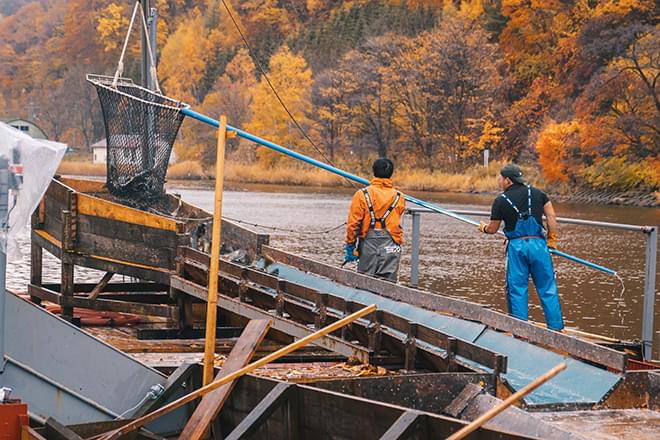
The Abashiri River is known for its huge catches of seafood, and salmon is in season come autumn. Lake Abashiri is fed by a river of the same name, which flows from the Sea of Okhotsk. For this reason, the salmon begin and end their life cycle here—they are born upstream in the river, journey across the ocean, and come back to the waters where they were born. The salmon return to the river full of fresh ikura (salmon roe), which is just as delicious as the salmon itself.
At the factory, you can observe the salmon being hoisted out of the river as they make their way upstream. Out of the water and straight onto diners’ plates—you can observe it all within a radius of a few kilometers. It doesn’t get any fresher than that!
- Name:
- Connectrip
- Address:
- 812-2 Yobito, Abashiri, Hokkaido
- Availability:
- Guided tours available with English support
Take a tour of the local factory making soy sauce and miso
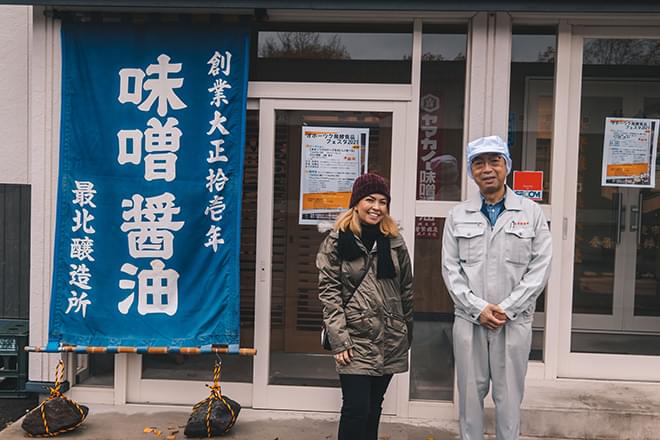
The factory Kurashige Jozo has been around for just over a century. Opened when the owner’s grandfather moved to Abashiri for that purpose, the factory continues to honor many of the old ways of operating. All produce used to create the soy sauce and miso, such as wheat and koji mold (an essential fungus for various Japanese products), is locally sourced. The koji itself is grown by Kurashige Jozo, which is a rare undertaking for a factory.
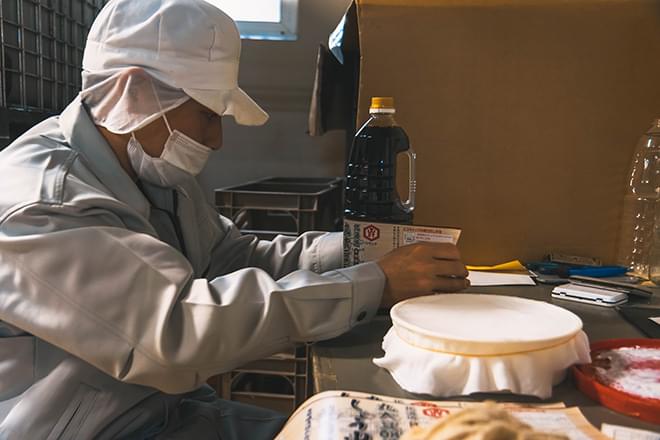
The tour takes you through the factory where you can observe the mesh of modern and historical technologies, such as the extremely large aged wooden barrels used to ferment the miso. With the third-generation owner personally describing the manufacturing process, you will acquire a good understanding of the whole operation, which is surprisingly hands-on even today—right down to the bottling and the labeling. Kurashige Jozo sticks to its traditions but keeps sustainability in mind with a recycling policy where loyal customers can “trade in” their empty glass bottles for new bottles of soy sauce. Kurashige Jozo’s products can be bought at the factory or at many gift shops and supermarkets in the region.
- Name:
- Kurashige Jozo
- Address:
- 341-51 Yobito, Abashiri, Hokkaido
- Availability
- Tours are available year-round.
Learn to make your own sushi, then eat lunch

After a morning of learning how salmon is fished and soy sauce is made, what better way to tie it all together than with sushi—making your own, that is! Making sushi at home is not as common as you may think, and it’s a real treat to be taught how to do it by an approachable and friendly sushi chef in town.
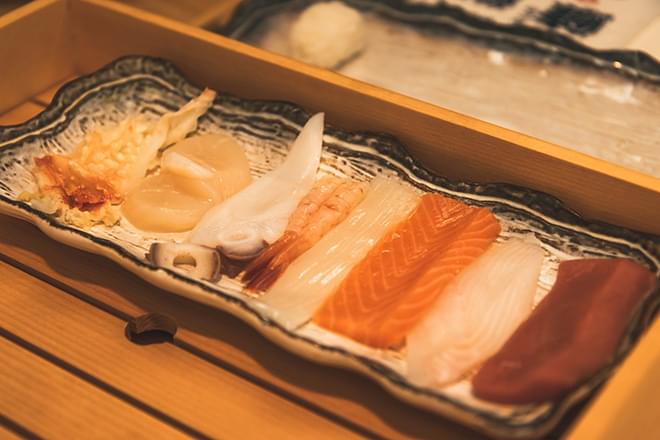
The owner and sushi chef of Nabe, Yuji Watanabe, will teach you all you need to know—from forming the perfectly shaped rice ball to placing the fish precisely on top of it. The best part is being able to sample the delicious seafood, including the ikura, which you saw being harvested at the salmon factory earlier in the day.
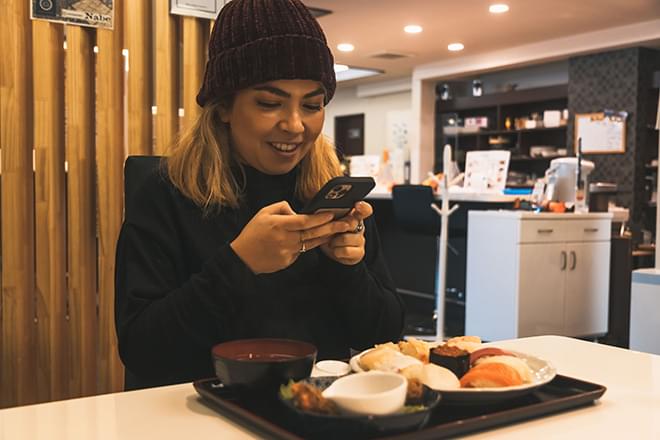
The sushi will be served with miso soup containing locally made miso and a fried-salmon dish. Take a bite of your sushi and see how it compares with that of a professional sushi chef!
- Name:
- Sushi Restaurant Nabe
- Address:
- 1-1 Minami Yonjyo Higashi, Abashiri, Hokkaido
- Availability
- Lunch and dinner service year-round; closed on Sundays
Take a spin in a New Mobility car
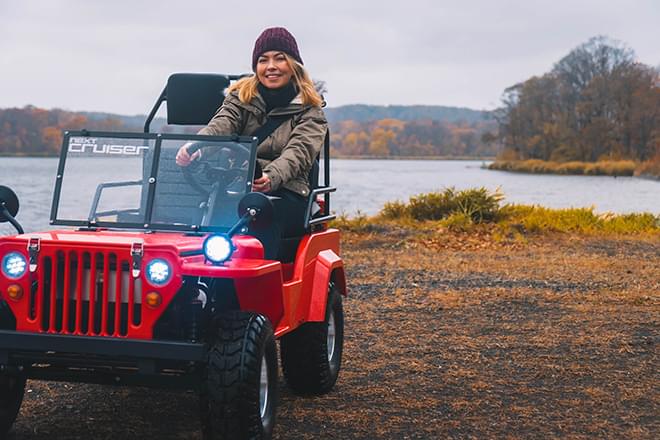
Fully fed and in the mood for some fresh air, you are ready to take the New Mobility car out for a spin. These electric minicruisers provide an exciting ride through the Abashiri hills and farmland, where all the food you ate on this trip came from. With no windows between you and the scenery, the car allows you to feel fully one with the land. Your guide will stop at viewpoints along the road, from which you will see spectacular vistas of vibrant foliage, snowy mountains, and the sea.
- Name:
- Connectrip
- Address:
- 812-2 Yobito, Abashiri, Hokkaido
- Availability
- Guided adventure tours are available year-round.
